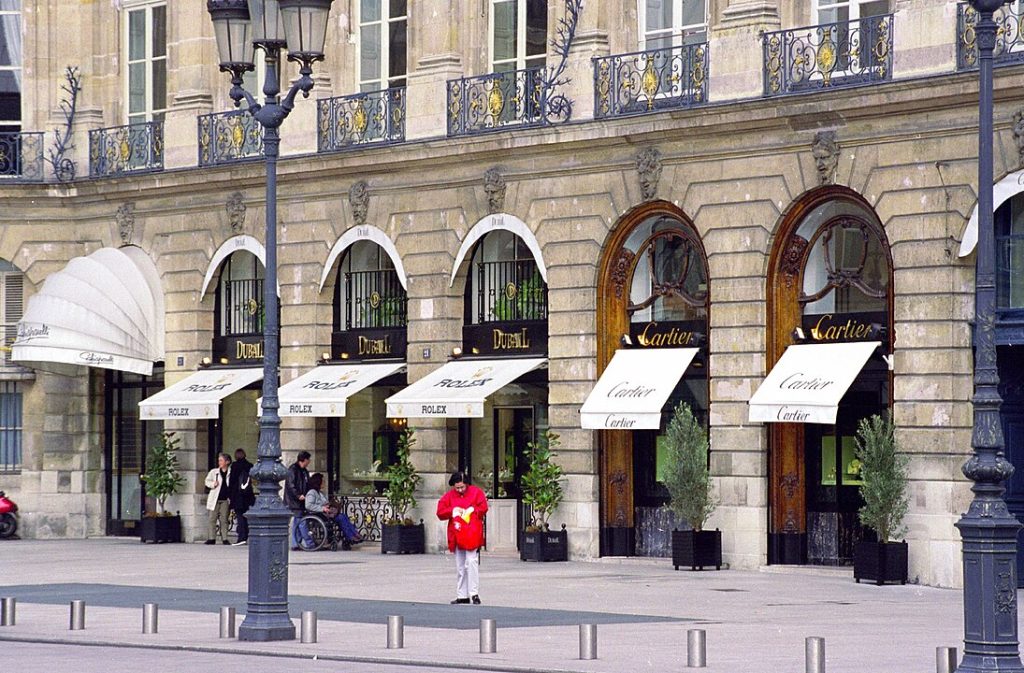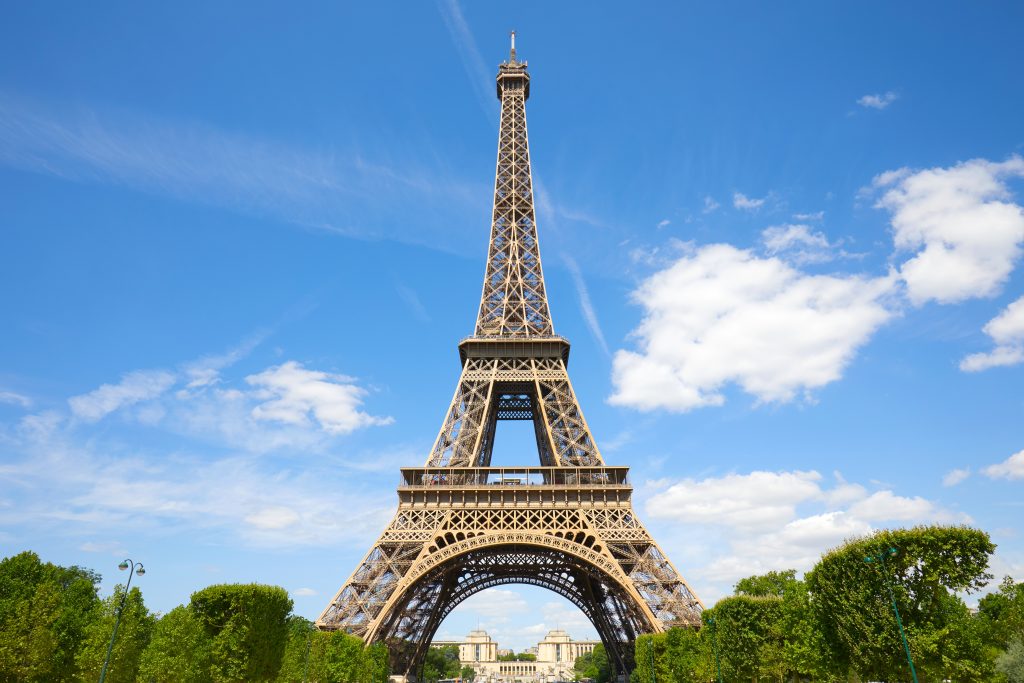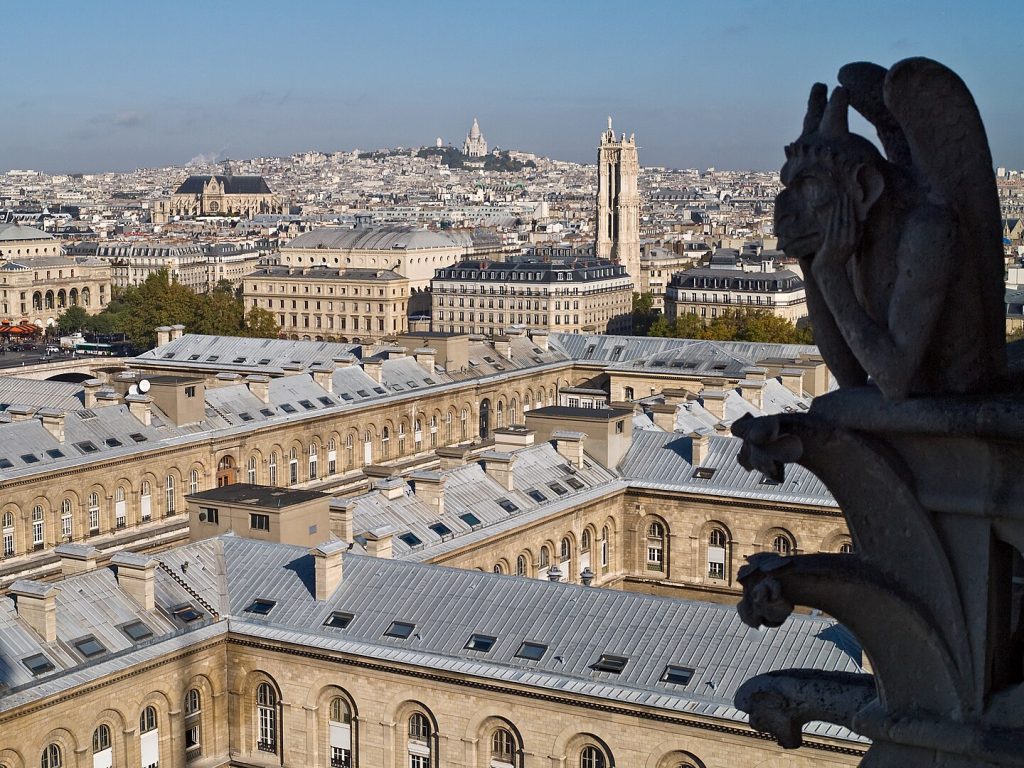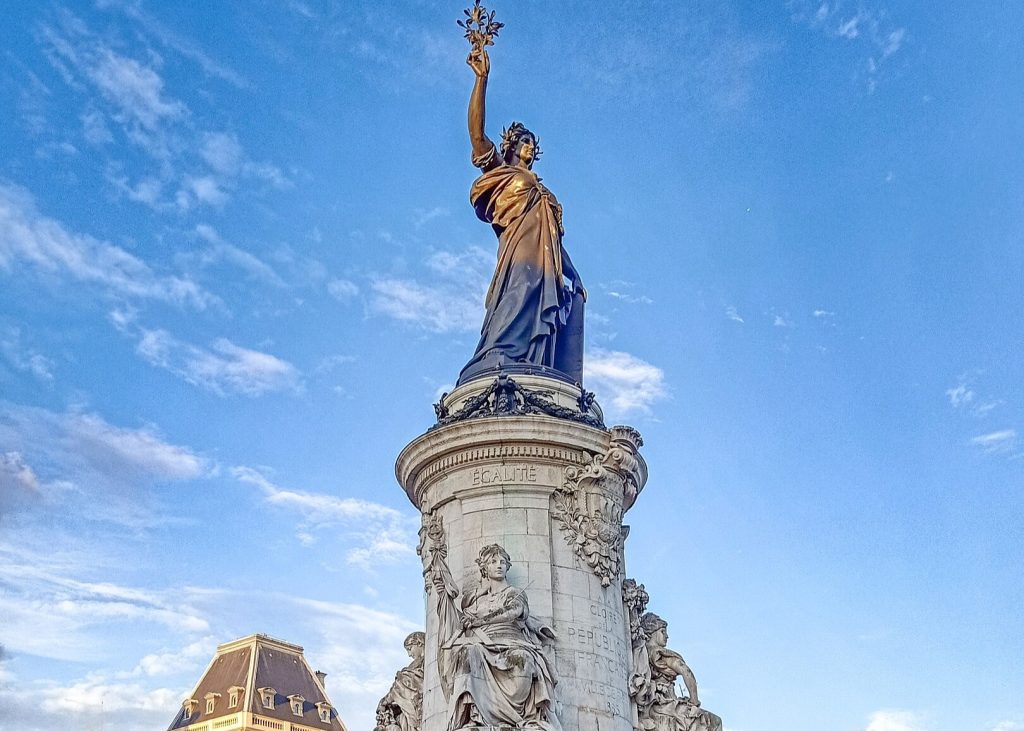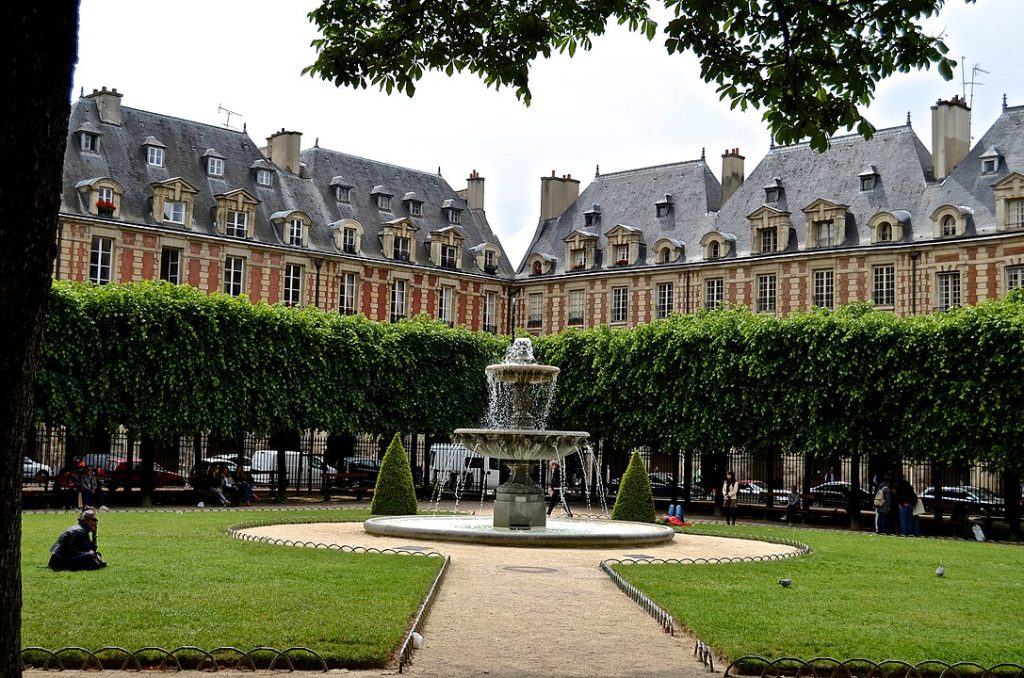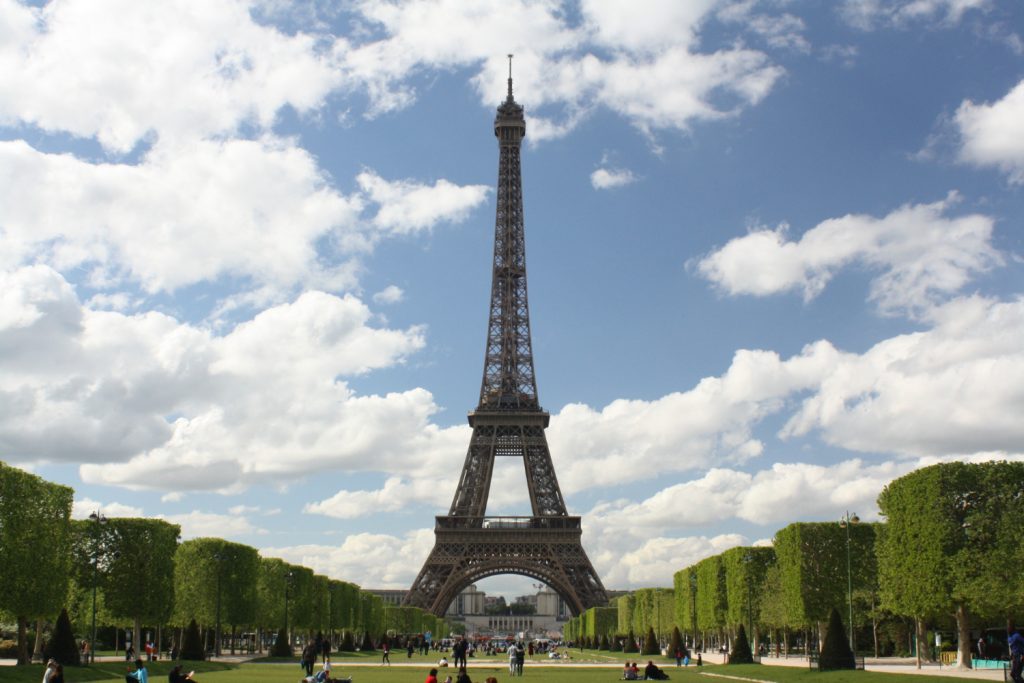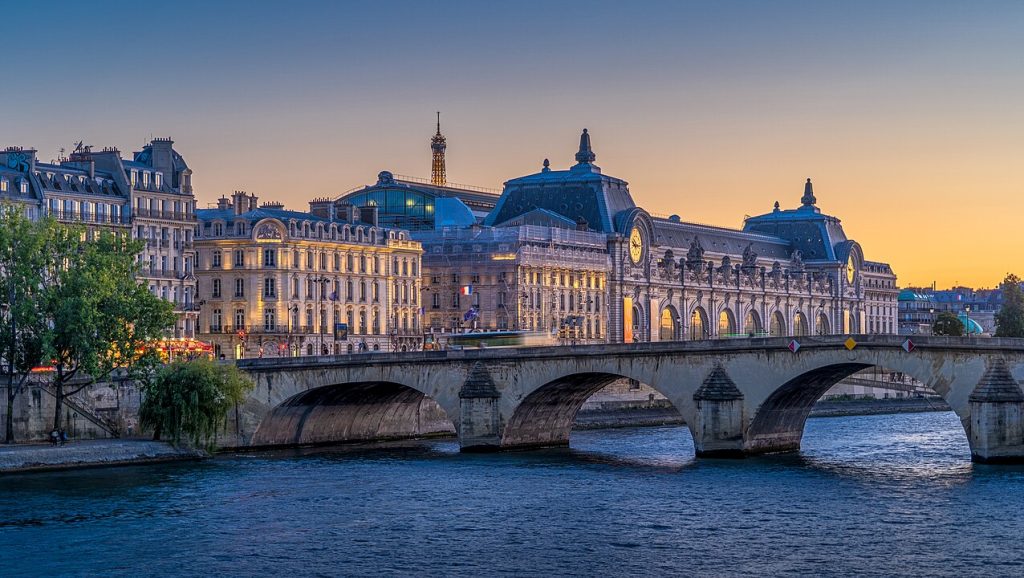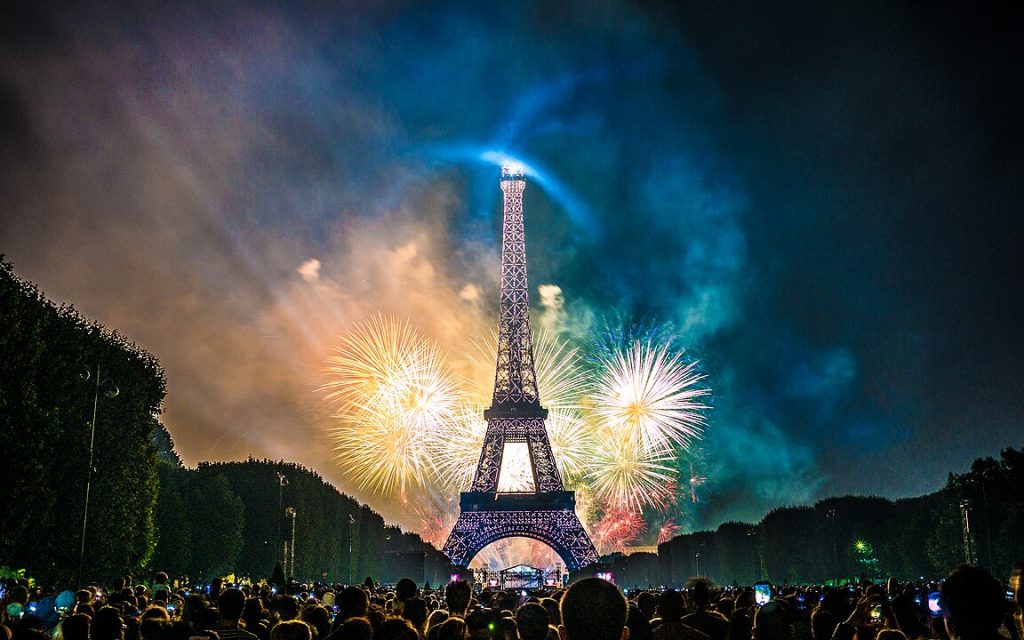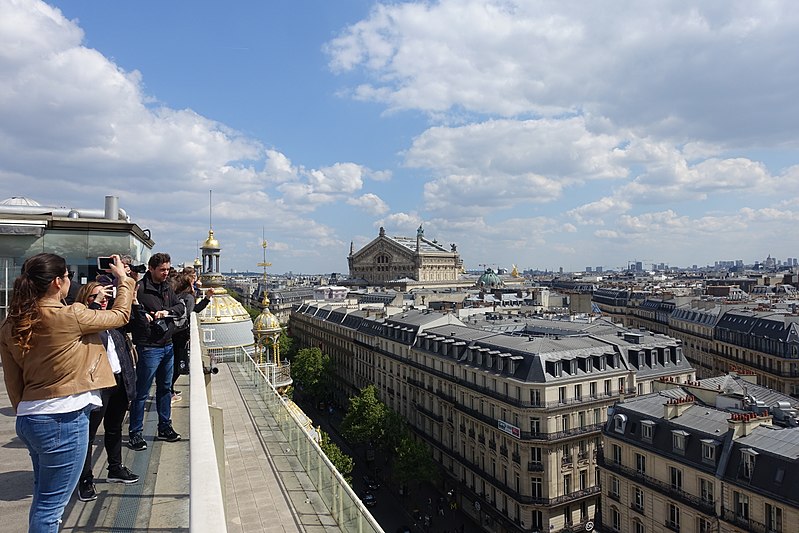- 1️⃣ Introduction - the heart of Paris full of contrasts
- 2️⃣ Genesis of Place de la Concorde
- 3️⃣ Place Louis XV - the beginnings of glory and splendor
- 4️⃣ Revolution and Time of Terror - Guillotine in the Square
- 5️⃣ From Revolution to Consent - transformation in Place de la Concorde
- 6️⃣ The Luxor Obelisk - symbol of peace or imperialism?
- 7️⃣ Fountains, sculptures and urban planning - the classics in a new edition
1️⃣ Introduction - the heart of Paris full of contrasts
🏙 Want to see a different face of Paris?
👉 Montmartre - the district of artists, dreams and independence
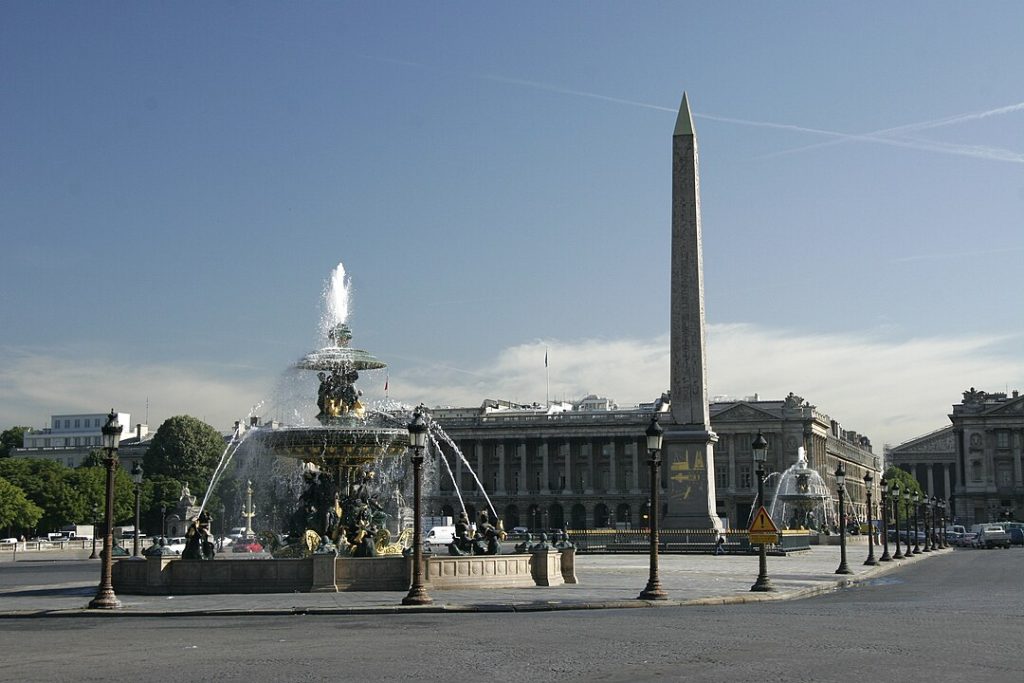
In the heart of Paris, between the Champs-Élysées and the Tuileries Gardens, stretches a square that has witnessed the The greatest dramas and breakthroughs in French history. Place de la Concorde, today elegant and full of harmony, for centuries bore the marks of monarchical splendor, revolutionary terror and political chaos.
It was here that monuments to kings were erected and their heads beheaded. Here were held both state ceremonies, as well as public executions, and later - demonstrations of modern democracy. Few places in Europe combine so strongly contrasting symbols of power, violence and reconciliation.
Walking through the Place de la Concorde is not only a journey in space, but also a in time. This is a story about how a square of shame can become a square of consent. How a public space can preserve the memory of the past without losing the function of a living urban fabric.
2️⃣ Genesis of Place de la Concorde
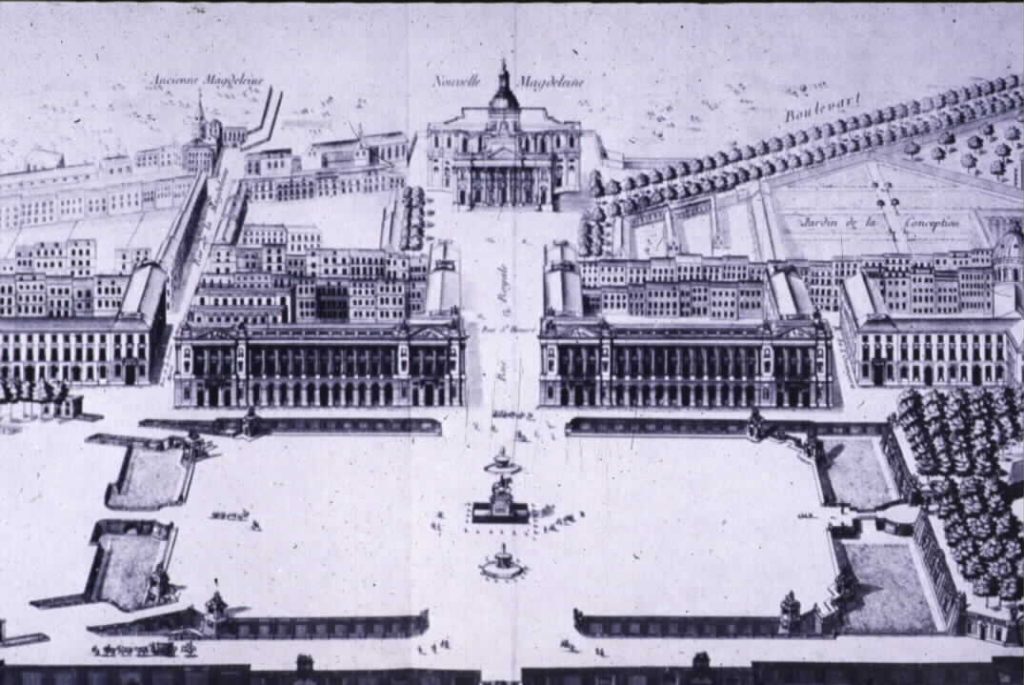
Before Place de la Concorde became a symbol of national harmony and one of the most beautiful squares in Europe, its history began with the royal ambitions and bold urban vision. The creation of the square was a response to the need to create a representative space worthy of the French monarchy.
💠 The inspiration came from... the king's recovery
The idea to create the square came after the Louis XV has made a miraculous recovery From a serious illness. As a gesture of gratitude, the monarch decided to erect a monument, which was to become the center of an impressive new square.
💠 Architectural competition and winning design
W 1748 announced urban planning competition, which was won by the royal architect Ange-Jacques Gabriel. He designed the space in a classical style - based on the harmony, axiality and elegance.
💠 Original name - Place Louis XV
The square was named Place Louis XV, and its focal point was king's equestrian statue. The whole thing was not only to decorate the city, but most importantly proclaim the glory of royal power.
💠 One of Europe's most modern urban developments
For the 18th century, it was innovative design - Spacious, orderly and impressive in size. Place Louis XV was regarded as urban planning template, whose significance extended far beyond the borders of Paris.
3️⃣ Place Louis XV - the beginnings of glory and splendor
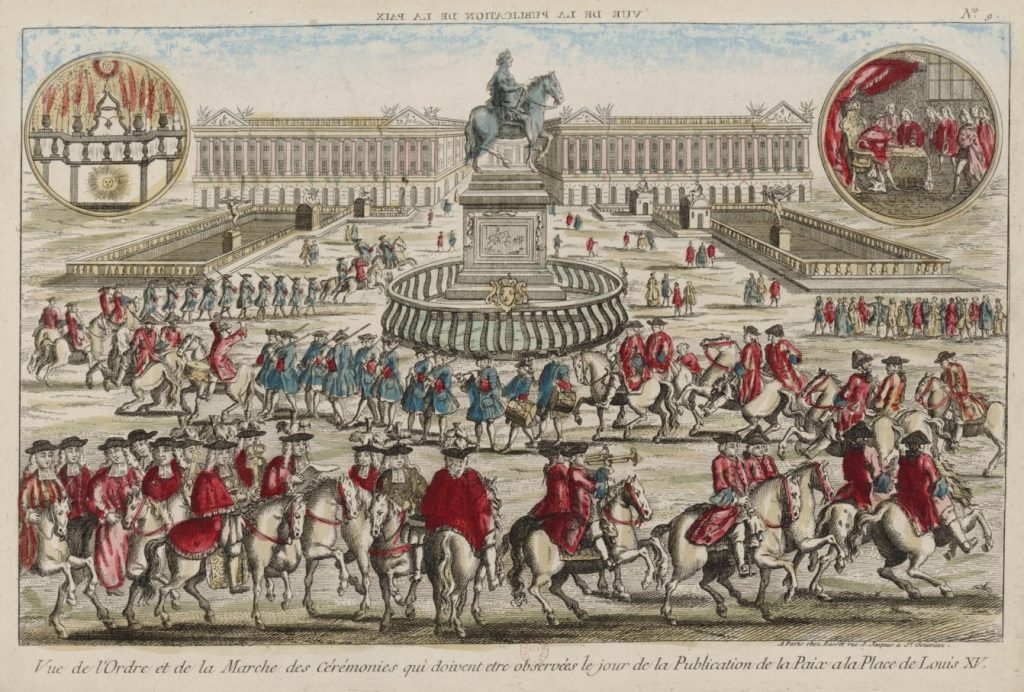
Place de la Concorde is the largest square in Paris, which from the beginning was intended to symbolize the the power of the French monarchy. Located between Champs Elysees a Tuileries Gardens, was to be an architectural landmark of 18th-century Paris and a representative place worthy of kings.
💠 Who designed it and when?
The square was designed in 1755 by architect Ange-Jacques Gabriel, by recommendation King Louis XV. In the center was originally located monument to the monarch himself, and the whole thing was called Place Louis XV. Surrounded by classicist architecture and elegant avenues, the square from the beginning had a awe and give prestige of the french court.
💠 Representative function under the ancien régime
In the 18th century, the square was the site of military parades, state ceremonies i walks of the aristocracy. Its spatial layout reflected the ideas of order and symmetry - values close to absolutism i classical art. It was a backdrop for royal events and a daily reminder of the majesty of power.
💠 The square as a witness to changing times
Soon, however, the square was to change its face - from a place of tribute to the king it became a the arena of the dramatic events of the French Revolution. But before that, Place Louis XV For more than three decades it served as a pride of the monarchy, being also one of the state-of-the-art urban planning Europe at the time.
4️⃣ Revolution and Time of Terror - Guillotine in the Square
🏙 Looking for a modern contrast to the historic downtown?
👉 La Défense - a futuristic district of Paris
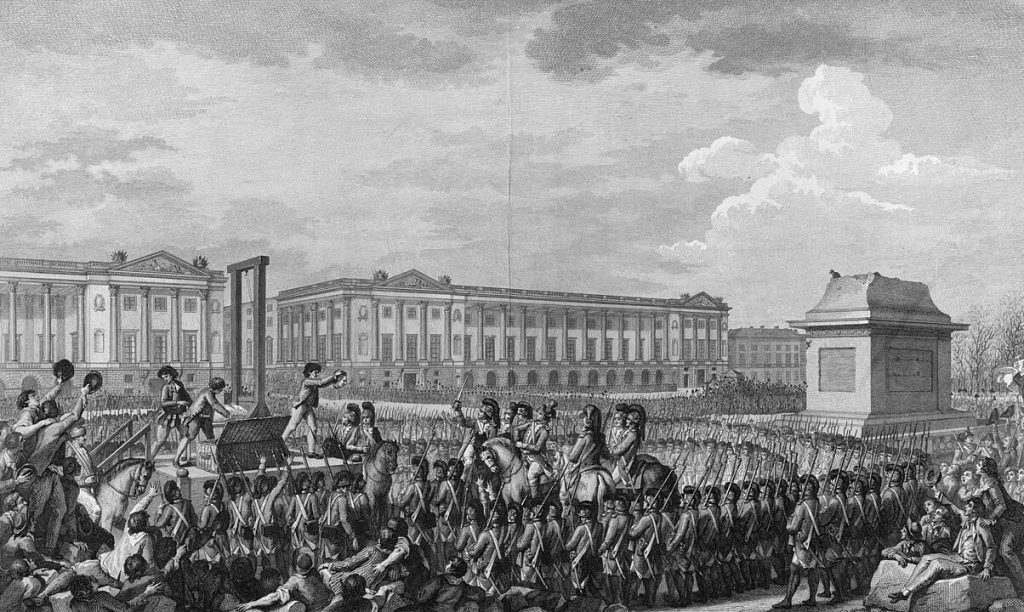
During the French Revolution, the Place de la Concorde became a an awe-inspiring place, a symbol of the struggle for a new order and bloody settlements with the ancien régime. It was here that the guillotine, which forever changed the character of the square.
💠 When did the guillotine appear?
W 1792, after the overthrow of the monarchy, the square was renamed the Place de la Révolution, and the statue of Louis XV was demolished. In its place, a guillotine was erected to symbolize the justice of the people. Already in January 1793 executed here himself King Louis XVI, and a few months later - Queen Marie Antoinette.
💠 How many people were executed?
It is estimated that the square guillotined about 1200 people. Among the victims were both representatives of the aristocracy and revolutionaries, who were considered "enemies of the people." The guillotine became an instrument not only of execution, but also of political intimidation.
💠 Symbolic meaning of the square during the revolution
Place de la Révolution was no longer a representative space - it had become a death spectacle, watched by crowds of Parisians. Each execution was public spectacle, which was intended to strengthen revolutionary propaganda and discourage counter-revolution. In those years the square was marked blood, fear and political fanaticism.
5️⃣ From Revolution to Consent - transformation in Place de la Concorde
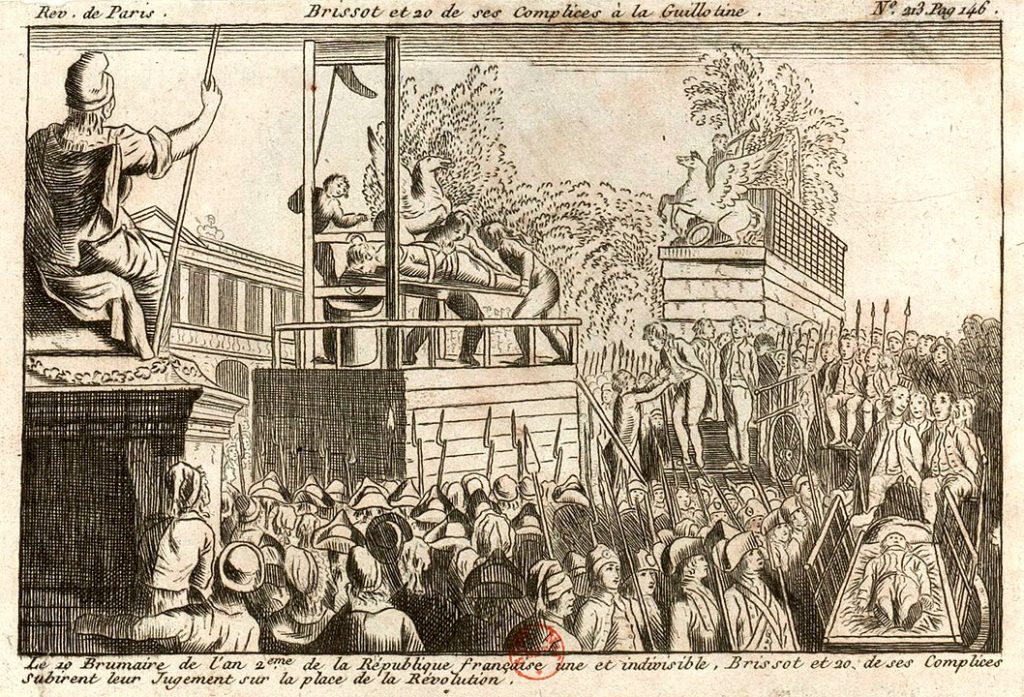
After the end of the French Revolution and the fall of the Reign of Terror, Paris had to redefine spaces marked by blood and drama. Thus began the transformation of the square, which was to carry the message from now on reconciliation, peace and a new beginning.
💠 New name, new meaning
W 1795 The name of the square was changed to Place de la Concorde - i.e. Consent Square. It was meant to symbolize Restoration of order and national unity After the bloody revolutionary period. The name survived despite much political turmoil - a sign of hope that the past can be overcome.
💠 The disappearance of the guillotine and the return of order
With the end of the terror guillotine removed, and the square ceased to be a place of execution. Slowly, it regained its representative function - although it continued to remind us of the dramatic history. Successive governments - from Napoleon to the July monarchy - made architectural and symbolic changes to give the square a more neutral and dignified character.
💠 The square as a space for national reconciliation
From then on, Place de la Concorde began to function as a A bridge between the past and the future. Its bloody chapters were not forgotten, but the direction of reflection and reconciliation was consciously chosen. Over time, the square became a symbol of modern Paris - A city that can combine history with the future.
6️⃣ The Luxor Obelisk - symbol of peace or imperialism?
🎉 Planning a trip in the summer?
👉 July 14 in Paris - National Day full of color and excitement

One of the most recognizable features of the Place de la Concorde is the Luxor obelisk - An ancient monument that appeared in the square in the 19th century. It is not only an exotic decoration, but also a testimony to the colonial era and fascination with the Orient.
💠 Where did the obelisk come from?
The obelisk comes from temple in Luxor in Egypt and has over 3300 years. W 1829 Egyptian authorities donated it to France as a gesture of friendship. Transporting this granite giant to Europe was a huge undertaking - it took several years and was successful in the 1836, when the obelisk was placed in the middle of Place de la Concorde.
💠 What is its significance?
The obelisk is decorated with hieroglyphics praising the pharaoh Ramses II. For 19th-century France, he was a symbol of the power of science, technology and political influence. Today, his presence is sometimes interpreted in two ways: as a evidence of openness to other cultures - but also as A symbol of the era of imperialism and European domination over the East.
💠 Obelisk in the urban landscape of Paris
The monument fits in perfectly with the geometric layout square - stands on the axis connecting the Arc de Triomphe and the Louvre. Since its erection, it has become the centerpiece of the square and the A favorite backdrop for photos of tourists from all over the world. At the same time, it is one of the oldest monuments in all of Paris, a reminder that the city's history goes back much further than the French Revolution.
7️⃣ Fountains, sculptures and urban planning - the classics in a new edition
🎶 Do you love live music?
👉 Free concerts in Paris - the best summer events
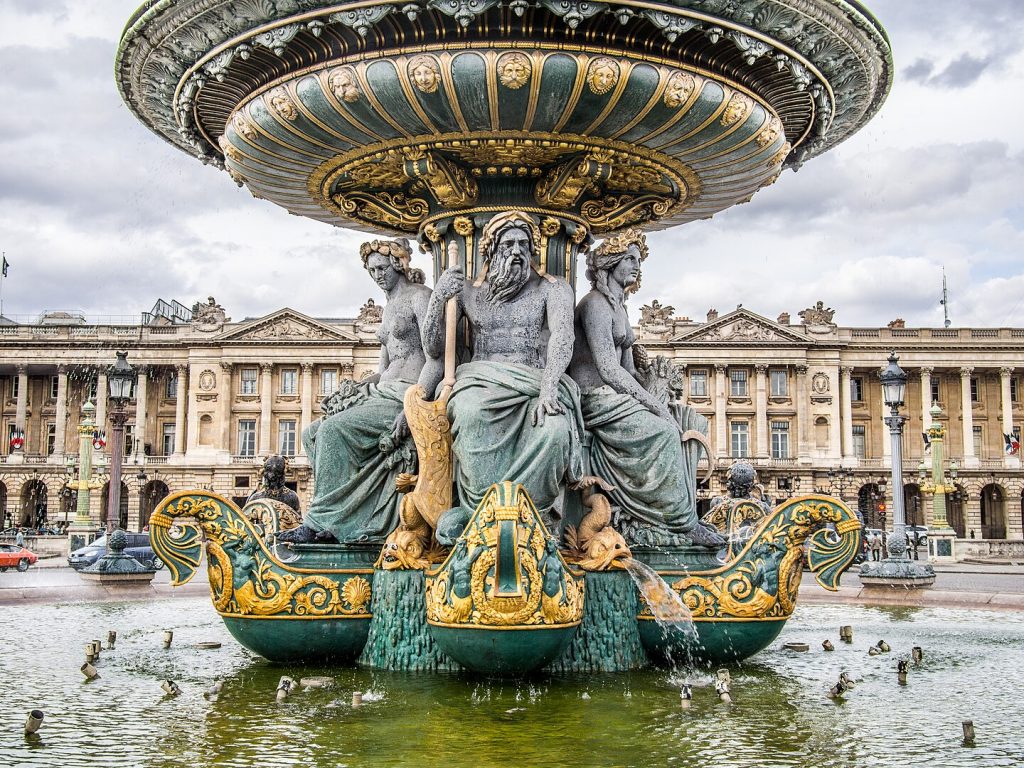
Place de la Concorde impresses not only with its scale and history, but also with its harmonious architectural composition. This is the place where Classical art merges with the idea of a representative, orderly city, characteristic of the 19th century.
💠 Two fountains - symmetry and symbolism
On either side of the obelisk are two monumental fountains, designed in the 1830s by Jacques Ignace Hittorf. The Fountain of the Seas (facing the Seine) and the Fountain of the Rivers (facing the Tuileries Gardens) symbolize the water riches of France. Their style was modeled after the piazzas of Rome - especially Piazza Navona - which adds to the overall space Mediterranean charm.
💠 Surrounding the square - classicist elegance
The square is surrounded by impressive buildings with classicist style facades, with distinctive columns and balustrades. Of particular note is the Hôtel de Crillon - a former aristocratic palace, today one of the world's most luxurious hotels - and home to former ministries and state institutions.
💠 Square as an ideal layout
Place de la Concorde is a prime example urban planning of the 19th century - Everything here has been thought out: view axes, proportions, symmetry. The central location of the square between the Champs Elysees and the Louvre makes it one of the key elements of the spatial layout of Paris, yet a place that continues to impress with its coherence and monumentality.
8️⃣ Place de la Concorde today - between history and everyday life
Today, the Place de la Concorde is not only a monument to the past, but also a A lively place on the map of modern Paris. Thousands of tourists, Parisians on their way to work, protests, national celebrations - the square constantly pulsates with urban rhythm, while preserving its historical heritage.
💠 Tourist attraction and landmark
The square is visited daily by thousands of tourists. Its central location and proximity to such icons as the Louvre, Champs Elysees whether Tuileries Gardens make it one of the most photographed places in Paris. The obelisk, fountains and classical architecture provide a natural backdrop for photos, but also encourage momentary reverie.
💠 Place of events and demonstrations
Place de la Concorde is also a public space that still serves an important role civic function. Demonstrations, political rallies and cultural events are held here. On New Year's Eve and national holidays, the square turns into a point of collective celebration, and sometimes - social debate.
💠 Square in the rhythm of a modern city
Although surrounded by history, Place de la Concorde is also teeming with modernity. Nearby are exclusive hotels, boutiques, cafes, as well as Paris' main thoroughfares. The square is thus a place where the past and the present meet - where you can both contemplate the fate of monarchs and revolutionaries and catch a bus to the other side of the Seine.
9️⃣ Most interesting facts and trivia about the square
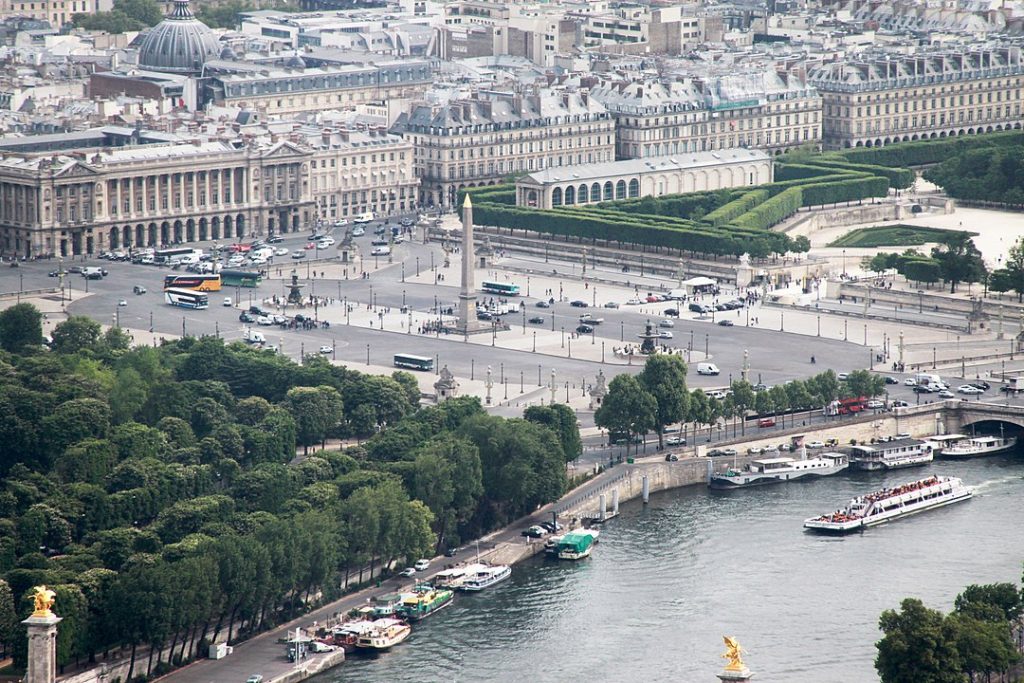
Although the Place de la Concorde is mostly known for its dramatic historical events and majestic architecture, it also hides many lesser known, surprising facts, which only add to its charm and depth.
💠 Obelisk with installation instructions
On the obelisk's pedestal you can see... illustrations showing exactly how the monument was transported and set up in the 19th century. It's a kind of DIY from two centuries ago - documentation of an engineering feat that is still impressive today.
💠 No Eiffel Tower? Not here!
From the Place de la Concorde extends one of the the most beautiful views of the Eiffel Tower, even though the tower itself is several kilometers away. That's why the square is one of the favorite spots for photographers and influencers - and often more atmospheric than the crowded Trocadéro.
💠 The French equivalent of Trafalgar Square?
For many, Place de la Concorde is something of a French version of Trafalgar Square in London - A meeting place, a manifestation, a symbolic national space. The difference is that instead of Admiral Nelson, here we have a Pharaoh and the history of kingship.
💠 Square without monuments to rulers
Although the history of the square has featured kings, emperors and revolutionaries - today no monument to a specific historical figure to be found here (with the exception of the Egyptian obelisk). This conscious decision, emphasizing the neutrality and community character of the space.
🔟 Completion - from blood to harmony
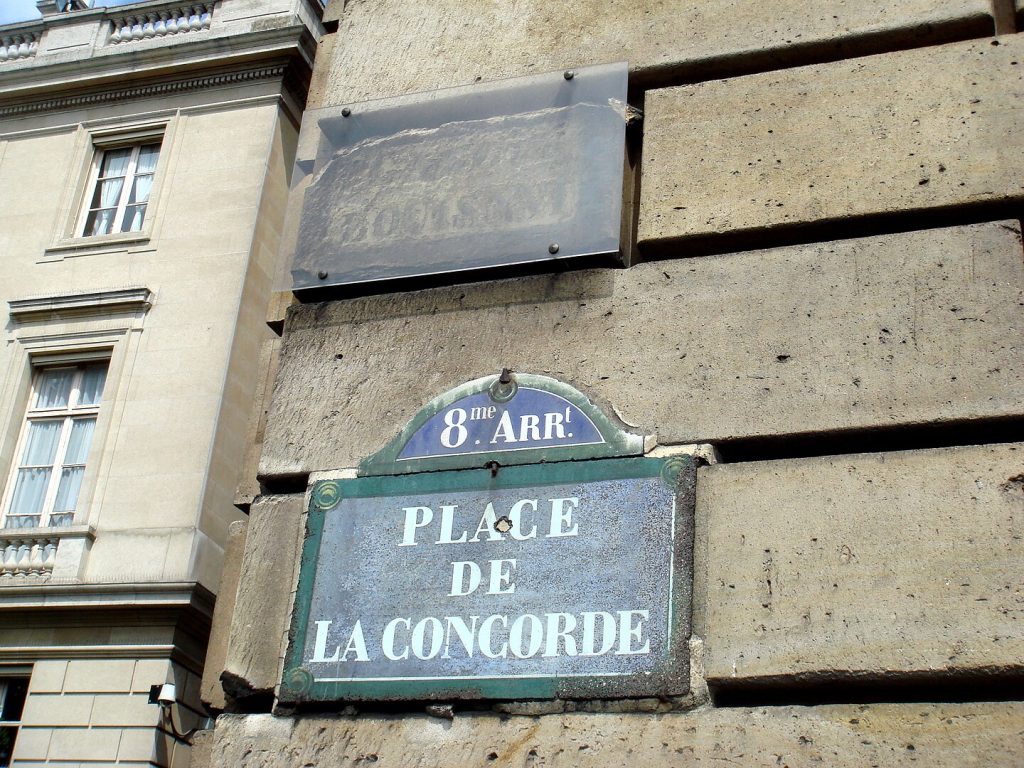
Place de la Concorde is one of those places that perfectly reflect the turbulent history of France - From royal glory to revolutionary executions to the days of modern democracy. A square that has seen The fall of the monarchy, the triumph of the revolution and the birth of the modern state, today symbolizes consent, continuity and national unity.
This is where the past meets the present - not in a haphazard way, but in a conscious and balanced way. Luxor obelisk, fountains, symmetrical urban layout and the lack of glorification of individual figures create a space that unites, not divides. It is not only an impressive tourist attraction, but also a a place of remembrance, reflection and meeting.
Walking through the Place de la Concorde is like traveling back in time - from the splendor of absolutism through bloody revolutions to modern society. That's why the square can be considered a the most symbolic road intersection in Paris - Literally and metaphorically.

